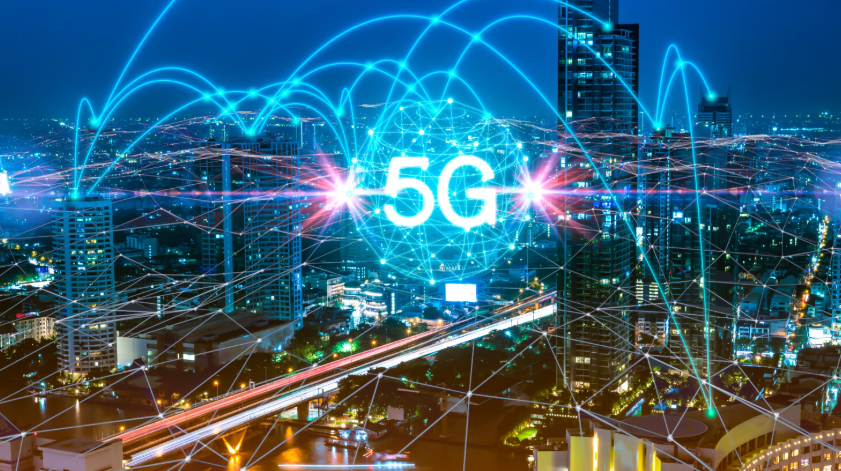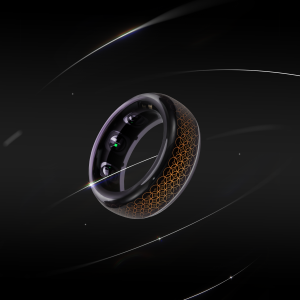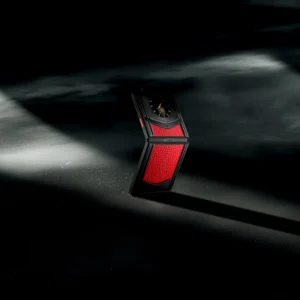
Does 5G give you better phone reception? Many assume a newer generation automatically means a superior experience, but the reality in 2025 is more complex. This comprehensive guide cuts through the hype, offering practical insights and actionable strategies to truly understand your mobile connectivity.
Whether you're a tech enthusiast or simply trying to get a reliable signal, understanding the nuances of 5G reception will provide invaluable knowledge. We'll explore all aspects, from frequency bands to environmental factors, helping you manage expectations and optimize your daily mobile experience.
Does 5G Always Mean Better Phone Reception in 2025?
Key Takeaways:
- Expectation vs. Reality: Many users in 2025 anticipate blazing-fast speeds from 5G, but their daily experience often feels less impressive, sometimes even slower than 4G LTE.
- Beyond Speed: ‘Better reception' in 2025 should encompass not only peak download speeds but also crucial factors like signal stability, consistency, and the ability to penetrate physical obstacles.
- Quality Over Label: A common misconception in 2025 is that any 5G connection is superior; often, a robust 4G LTE signal can outperform a weak or inconsistent 5G signal.
The core question isn't just ‘Does 5G give you better phone reception?' but rather, ‘Does it give you consistently better phone reception across all scenarios in 2025?' While 5G promises revolutionary speeds, its real-world performance in 2025 is highly dependent on various factors. This often leads to experiences that don't always meet the hype. Understanding these nuances is key to managing expectations for your mobile connectivity.
Why Your 5G Might Feel Slower Than Expected in 2025
Your 5G might feel slower due to the type of 5G deployed, signal strength, and environmental factors. High-frequency mmWave 5G offers incredible speeds but has limited range and poor building penetration. This means a few steps indoors can easily drop your signal or revert to 4G.
Sub-6 GHz 5G, while more widespread, often provides speeds only marginally better than advanced 4G LTE, especially in congested areas. Ultimately, a weak 5G signal, regardless of its type, can indeed perform worse than a strong, stable 4G LTE connection.
Redefining ‘Better Reception' for Your 2025 Phone: Beyond Just Speed
‘Better reception' in 2025 should encompass more than just peak download speeds. True improvement means signal stability, consistency, and the ability to penetrate physical obstacles like walls or dense foliage.
A connection that consistently delivers reliable performance, low latency for real-time applications, and maintains a steady signal indoors or in crowded venues often provides a superior user experience. This holds true even if its theoretical peak speed isn't the highest.
Decoding 2025 5G Signals: It's All About the Frequencies
Key Takeaways: In 2025, your 5G experience hinges on the frequency band. Low-band and mid-band offer widespread, everyday connectivity, while mmWave delivers blazing speeds in limited areas. Dynamic Spectrum Sharing (DSS) efficiently rolls out 5G but can make performance feel similar to 4G. Understanding these nuances clarifies whether 5G truly gives you better phone reception.
Low-Band & Mid-Band 5G: Your Everyday 2025 Connection
What is the most common 5G experience in 2025? In 2025, your primary 5G connection will largely be on sub-6 GHz frequencies, encompassing both low-band and mid-band 5G. These bands provide superior range and penetration, allowing signals to travel further and pass through obstacles more easily.
While offering improved coverage and reliability, their speeds might often be comparable to advanced 4G LTE. This widespread availability is where 5G most consistently contributes to better phone reception for daily use.
Millimeter Wave (mmWave) 5G: The Blazing Fast (But Fickle) Speedster in 2025
Where can you find the fastest 5G speeds in 2025? Millimeter Wave (mmWave) 5G offers the highest speeds in 2025, potentially delivering gigabit performance akin to wired internet plans like INTERNET ADVANTAGE 100 Mbps, INTERNET PREMIER 500 Mbps, or even INTERNET GIG 1 Gig.
However, mmWave signals have extremely limited range and poor penetration, easily blocked by walls, trees, or even your body. Therefore, in 2025, mmWave is primarily found in specific, densely covered urban hotspots, stadiums, or venues, not for general “better phone reception” across broad areas.
Dynamic Spectrum Sharing (DSS) Impact on Your 2025 5G Experience
How does DSS affect your 2025 5G performance? Dynamic Spectrum Sharing (DSS) allows carriers in 2025 to run both 4G LTE and 5G on the same frequency band, an efficient deployment strategy. However, this efficiency can come with a trade-off: your “5G” connection might not always feel significantly faster than a dedicated 4G signal.
Due to the overhead of managing both technologies simultaneously, DSS-enabled 5G can sometimes perform similarly to, or even slightly worse than, a strong 4G connection. This raises questions about whether it truly offers better phone reception in all scenarios.
Why Your 5G Drops Indoors: The 2025 Building Blocker Breakdown
Key Takeaways: In 2025, 5G's indoor performance is primarily hindered by specific building materials, a persistent “indoor reception gap” where strong outdoor signals don't penetrate, and the “urban canyon” effect in dense cities. These factors often force devices to revert to 4G LTE, challenging the perception of “Does 5G give you better phone reception?” indoors.
Common Building Materials That Block Your 5G Signal in 2025
A major challenge for 5G reception in 2025 is signal attenuation caused by various building materials, often forcing devices to revert to 4G LTE indoors. Dense materials like concrete, brick, metal, and certain types of energy-efficient glass can significantly reduce 5G signal strength, especially for higher frequency bands. This directly impacts whether 5G gives you better phone reception when you are inside.
The Persistent ‘Indoor Reception Gap' for 5G in 2025
The ‘indoor reception gap' highlights that strong outdoor 5G signals in 2025 often don't translate to reliable indoor performance due to signal penetration issues. Despite robust outdoor coverage, 5G's higher frequencies struggle to pass through walls. This leads to a noticeable drop in speed and reliability once you step inside homes, offices, or other buildings.
Navigating the ‘Urban Canyon' Effect for Your 5G Phone in 2025
In dense urban environments, the ‘urban canyon' effect means tall buildings can create signal shadows, leading to inconsistent or non-existent 5G reception, even if coverage maps show availability. This is particularly noticeable in scenarios like subways, deep inside commercial buildings, or even just stepping from outdoors into a coffee shop in 2025, where your 5G phone might struggle to maintain a connection.
Key Takeaways: By 2025, 5G reception varies significantly by carrier and location. Mid-band 5G is key for widespread performance. Always check carrier-specific maps for accurate expectations.
Your Carrier's 5G Reality in 2025: What to Expect from Verizon, AT&T & T-Mobile
Understanding your 5G experience in 2025 means recognizing that “better reception” is highly dependent on your carrier's specific network buildout. While 5G promises enhancements, the reality of its performance and coverage will differ based on the type of 5G deployed in your area.
The Evolving US 5G Network Topography by 2025
By 2025, low-band 5G provides wide (but not always super-fast) coverage across the US, acting as a foundational layer. However, mid-band 5G is becoming the dominant strategy for widespread, higher-performance deployment. It offers a significant boost in speed and capacity over low-band, thus contributing most to a perception of “better reception” for everyday use.
Carrier-Specific 5G Deployment Strategies for 2025
Each major US carrier – Verizon, AT&T, and T-Mobile – has unique 5G rollout priorities and strategies in 2025, influencing your specific user experience. Verizon initially emphasized mmWave and is now rapidly expanding mid-band. T-Mobile focused heavily on mid-band from the start, leveraging its substantial spectrum. AT&T continues its broad rollout of both low and mid-band 5G, aiming for extensive coverage.
Your experience with ‘better reception‘ in 2025 can vary significantly depending on which carrier you use and their specific 5G infrastructure in your area.
Using Carrier 5G Coverage Maps Effectively for 2025
To manage your reception expectations, always consult your carrier's official 5G coverage maps in 2025. These maps often differentiate between low-band, mid-band, and mmWave coverage. Understanding these distinctions helps you predict where you'll get basic 5G signal versus areas with faster, more robust connections, directly impacting your perceived “better reception.”
Boost Your 2025 5G Reception: Simple Fixes You Can Do Now
Key Takeaways: Optimizing your 5G reception in 2025 often involves simple adjustments to your phone settings, physical location, and leveraging alternative communication methods. Understanding your 5G connection type (mmWave, Mid-band, or Low-band) by checking your phone settings or status indicators is crucial to understanding expected reception quality. While 5G generally promises better reception, these tips ensure you maximize your experience.
Quick Phone Settings Tweaks for Better 5G Reception
Does 5G give you better phone reception? Yes, but sometimes a quick refresh is all it takes. If you're experiencing sluggish 5G, simply toggling Airplane Mode on and off, restarting your phone, or ensuring your operating system is updated can refresh your 5G connection and significantly improve reception in 2025. These actions clear temporary network glitches and re-establish a fresh link with the nearest 5G tower.
Strategic Device Positioning for Optimal 5G in 2025
Your physical location dramatically impacts 5G performance. To get better 5G reception, try moving closer to windows, going outdoors, or finding higher ground. This is especially critical for faster, but less pervasive, mmWave signals, which struggle to penetrate obstacles. Minimizing physical barriers between your device and the cell tower can provide a stronger, more stable 5G connection.
Leveraging Wi-Fi Calling & Texting Indoors in 2025
For areas with poor cellular signal penetration within homes, offices, or large commercial venues in 2025, Wi-Fi Calling and Texting is a robust and reliable solution. By routing calls and texts over your Wi-Fi network, you bypass cellular signal limitations entirely, ensuring clear communication even in dead zones where 5G or 4G LTE signals struggle to reach.
When to Temporarily Disable 5G on Your Phone
While 5G offers speed, it's not always the best option. If your 5G coverage is inconsistent, causes excessive battery drain, or provides a demonstrably worse user experience (e.g., frequent drops to 4G), consider switching your phone's preferred network type to 4G LTE temporarily. This can provide a more stable and reliable connection, conserving battery life until 5G coverage improves in your area.
Going Beyond: Advanced 2025 Solutions for Consistent 5G Reception (Future-Proofing)
Key Takeaways:
- Signal boosters resolve persistent indoor 5G reception issues.
- 5G Standalone (SA) improves efficiency but doesn't overcome physical signal penetration limits.
- 5G modems consume more battery when struggling for stable connections.
- Poor 5G reception often stems from 5G's physical properties or network deployment.
Does 5G give you better phone reception? While 5G promises blazing speeds, achieving consistent indoor coverage can still be challenging in 2025. Often, perceived ‘poor 5G reception' isn't a faulty phone but a characteristic of 5G's physical properties or the current stage of network deployment.
Could a 5G Signal Booster Be Your 2025 Solution?
For persistent indoor 5G reception issues, a dedicated 5G signal booster can be an excellent investment in 2025, amplifying weak outdoor signals for better indoor coverage. While governments invest in broader connectivity, like the UK's £41 million pledge for “low-earth-orbit satellite connectivity on all mainline trains,” localized indoor solutions remain crucial for specific environments.
What 5G Standalone (SA) Means for Your Reception in 2025
While the transition to 5G Standalone (SA) networks in 2025 will improve efficiency and lower latency, it won't fundamentally alter the physical limitations of high-frequency signal penetration through solid objects. A “Gap Analysis of 5G Network Coverage in Bandung City with Non-Standalone Scenario” confirms that achieving ubiquitous coverage without physical barriers remains challenging despite network evolution.
Understanding 5G and Phone Battery Drain in 2025
5G modems, especially when constantly searching for or switching between different 5G bands or falling back to 4G, can consume more battery than a stable 4G connection in 2025 – a factor to consider for your daily usage. Even with advancements in antenna design, such as “multi-band wearable antenna with the bending analysis for off-body applications” aiming for efficiency, 5G's inherent power demands will still impact battery life.
التعليمات
Q1: Does 5G always provide faster internet speeds than 4G in 2025?
A1: Not always. While 5G can offer significantly higher peak speeds, especially mmWave, real-world performance depends on the type of 5G available (low-band, mid-band, or mmWave), signal strength, and network congestion. A strong, stable 4G LTE connection can often outperform a weak or inconsistent 5G signal.
Q2: Why does my 5G signal often drop or feel slow when I'm indoors?
A2: 5G signals, particularly higher frequencies like mmWave, struggle to penetrate dense building materials such as concrete, brick, metal, and certain types of glass. This “indoor reception gap” often causes your device to revert to a more stable 4G LTE signal or experience slower speeds once you move inside.
Q3: What are the main types of 5G, and how do they affect my phone reception?
A3: The main types are low-band, mid-band, and millimeter-wave (mmWave) 5G. Low-band and mid-band offer wider coverage and better penetration for everyday use, with speeds often comparable to advanced 4G. MmWave provides ultra-fast speeds but has very limited range and poor penetration, making it suitable for specific outdoor hotspots rather than general widespread reception.
Q4: Can I improve my 5G reception at home or in the office if it's consistently poor?
A4: Yes. Simple fixes include moving closer to windows, going outdoors, or restarting your phone. For persistent indoor issues, leveraging Wi-Fi Calling/Texting is highly effective as it bypasses cellular signals. For significant and consistent improvement, a dedicated 5G signal booster can amplify weak outdoor signals for better indoor coverage.








